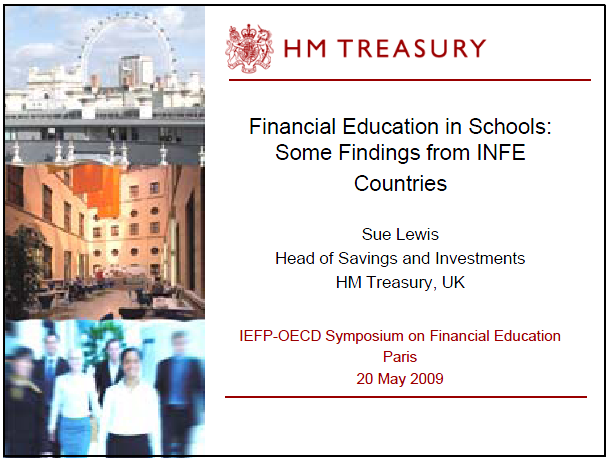Financial Education in Schools: Some Findings from INFE Countries
- IEFP-OECD Symposium on Financial Education, Paris
- Sue Lewis, Head of Savings and Investments, HM Treasury, UK
- 5 pages
- Restricted
- May 20, 2009
Financial Education in OECD Schools – Summary
- 31 countries responded
- 17 had financial education in schools; 14 did not
- Well established in some countries (US, Korea, Japan, Netherlands, Poland); others more recent
- Compulsory in 8 countries; 9 have statutory curriculum
- Standalone subject in 5 countries
- Generally about one hour a week
- 8 countries teach throughout school (approx. age 5-18)
Advantages of starting young
- Prepare children to:
- Make good decisions about money
- Use financial products wisely
- Get ready for the world of work
- Understand the economy
- Know where to go to for help about money
Elements of financial education
- Budgeting personal and household income
- Understanding financial concepts, like interest
- Understanding risk
- How to use a bank
- Products for different life stages
- Saving, investment and retirement planning
- Ethical considerations; economics
Enablers for financial education in schools
- Government support
- A lead organisation to promote financial education
- A statutory curriculum
- Good teacher training and materials
- Money!
Involvement of stakeholders
- Regulator, central bank, stock exchange, consumer protection agencies, NGOs, banks
- Protection against conflicts:
- Standards prohibiting marketing or advertising material
- Expert committees
- Quality assurance

